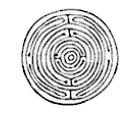Plantation Archaeology

Plantation Archaeology (The Warner Site Archaeology Project)
Plantation archaeology on Antigua is in its infancy. Few archaeologists have expressed interest in this sensitive area of research. The Dockyard Museum's Field Research Centre, in partnership with the University of Calgary Antigua Field School is now addressing this issue.
The first step of this new project is to conduct a search for documents that may provide guidance and information about the site. The second step was to conduct a systematic survey of the site to identify the best areas for excavation.
In June 2004, archaeological research began at the Warner family estate at Piccadilly (ca. 1640s to 1760s), St. Paul. Findings include, Delft china, red clay tobacco pipes, Afro-Antiguan pottery, slipped English earthenware, and the remains of a male member of the Warner family.
The Warner's were a prominent family during the earliest days of colonization. In 1632, under the leadership of Edward Warner, the son of Thomas Warner, the island was colonized. Edward's grandson Henry began construction of Fort Berkerley in the 1730s' and worked as a commissioner of the newly established naval Dockyard. Their estate was established at the Piccadilly site prior to the introduction of sugar cane. His tomb is situated on the site although badly damaged by vandals.
Sites: Betty's Hope | Warner Family Estate, Piccadilli
Life and Death in the Colonies | Plantation Archaeology
Introduction | Archaic Age | Ceramic Age/Pre Columbian Saladoid | Post Saladoid | Historical Period | Common Myths
